Venezuela. Part IMapFebruary 04–13, 2008 I was still full of impressions from my trip across the US, so the first thing I wanted to see in Venezuela was what the utility poles were like. Turns out, they’re completely normal. The poles are metal in the entire country, including the most remote mountain villages. 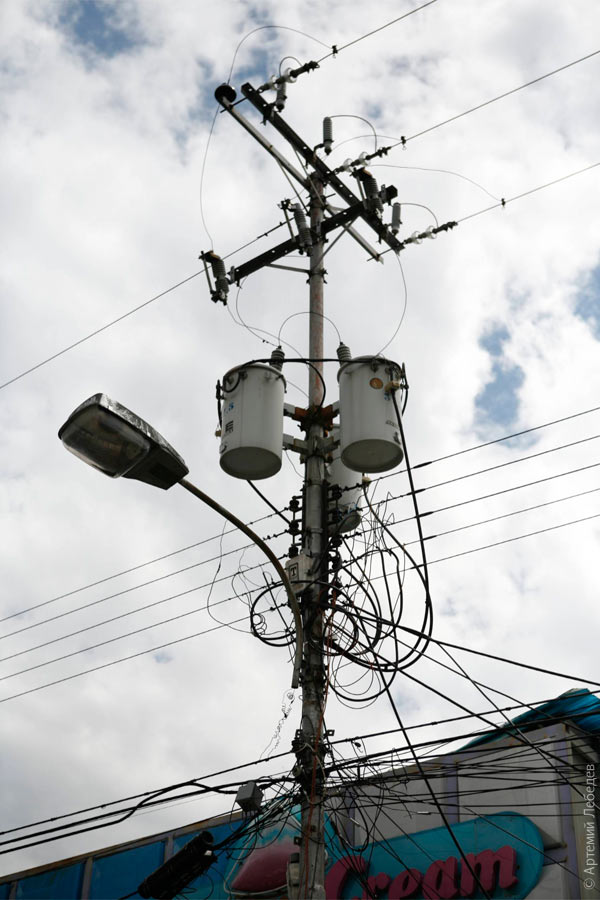 The barrel-shaped transformers are just like the ones in the US. But here, a utility pole can be an intersection, i.e. have lines going through it in perpendicular directions. I’m not sure I’ve ever seen anything like this before. 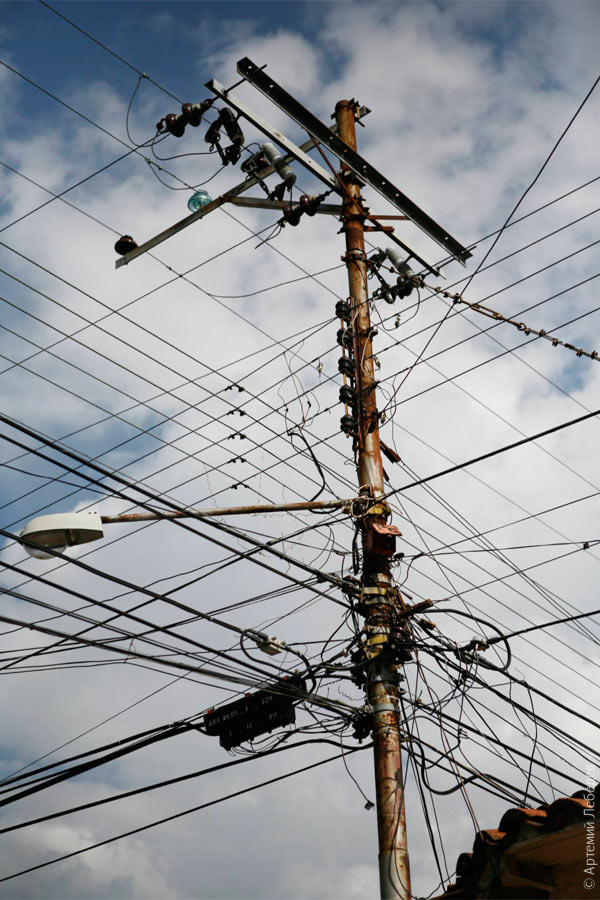 It’s pretty obvious that absolutely everything in Venezuela—the light switches, the traffic signs, the traffic lights, the pole-mounted transformers—was adopted from the US. At the same time, it’s perfectly normal to come across a mural depicting the sword-wielding hand of national liberation driving out the Statue of Liberty (which is holding a bomb in its claws), a bald eagle and an American flag consisting of skulls on blue and streams of blood on white. For good measure, the white-gloved hand is also driving out a petty scoundrel in an Israeli flag necktie. Following the hand are the country’s people: Indians, blacks and so on. The fact that there’s a decidedly American fire hydrant in front of all this doesn’t seem to bother anyone. 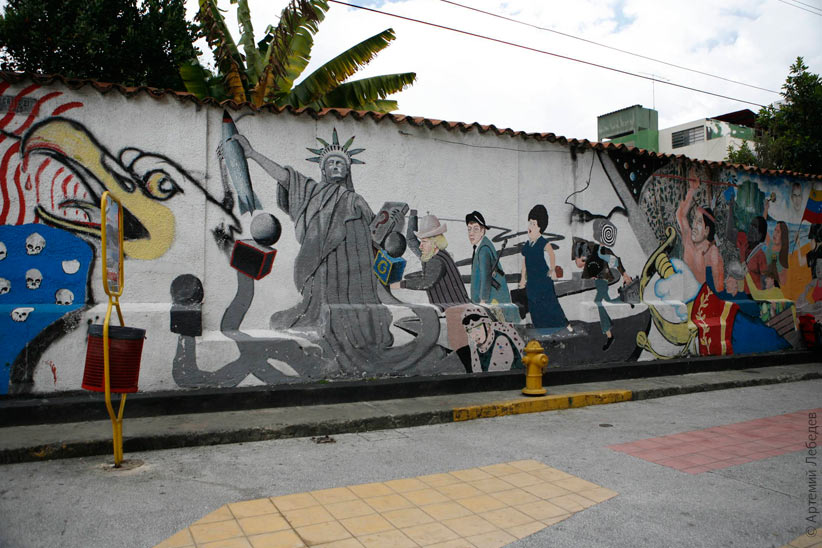 The standpipes in the walls differ from their northern counterparts only in that they have popsicle sticks stuck inside them. 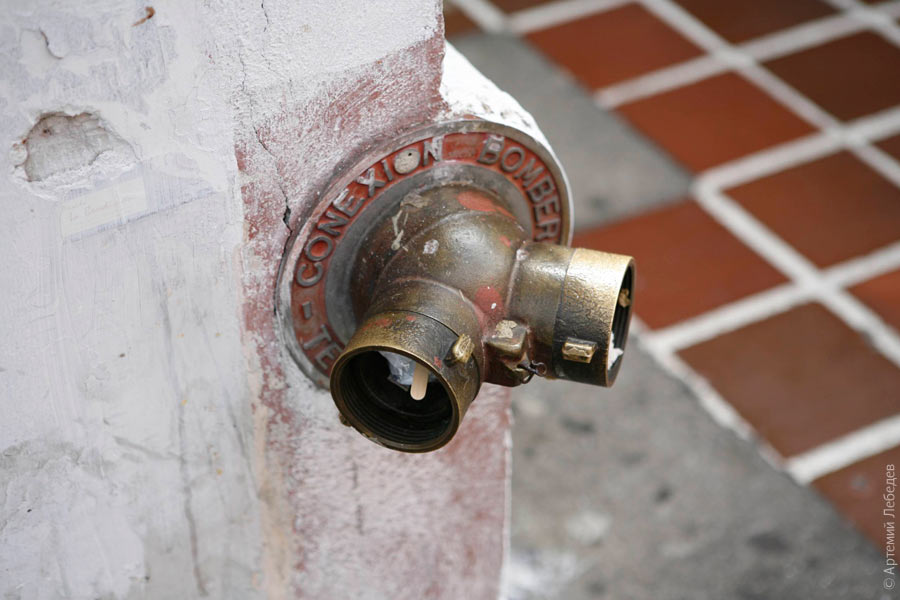 The typically American «one way» sign—a white arrow on a black background—has been wonderfully updated here to designate two-way traffic (the last time I was this happy was upon seeing permissive signs with a green ring in Canada). 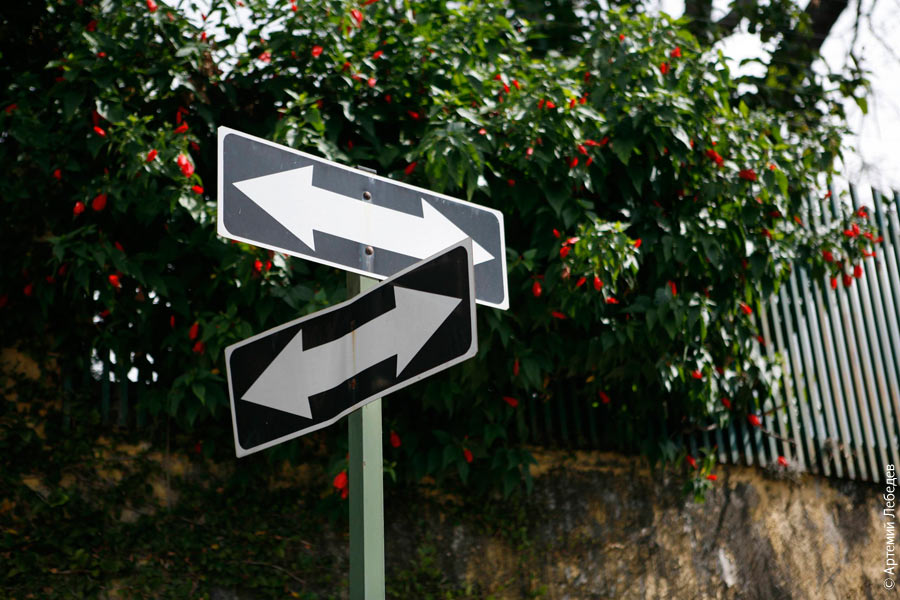 There are plenty of typically American yellow diamond signs. This one is preserving the silhouette of an old traffic light that hasn’t survived to the present day. 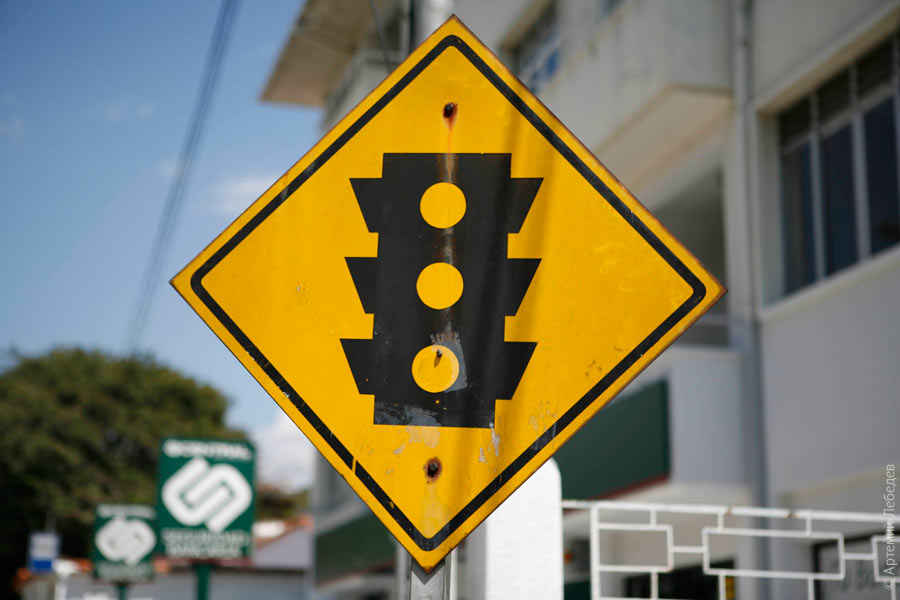 Some of the signs are more typical for Europe and South America, such as the «no parking» and «no stopping» signs (like the ones in Chile): 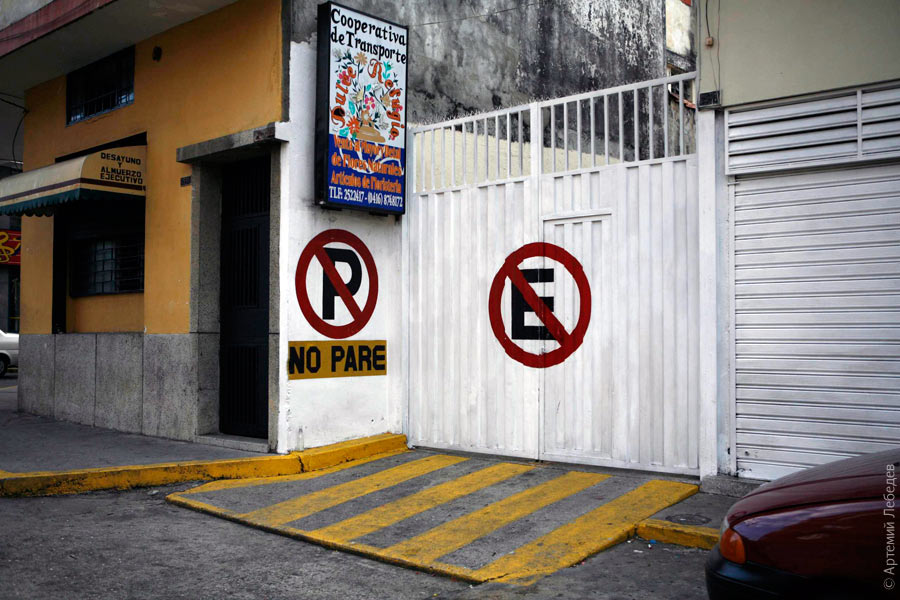 Rest area signs feature all kinds of things, from an observatory to a condor nesting site. Life is no picnic for the condors here: the local indigenous population believes that condors steal newborns. Therefore, the sacred duty of every Indian is to kill all the condors. The authorities are laboriously breeding the birds, but superstitions end up trumping environmental protection efforts. 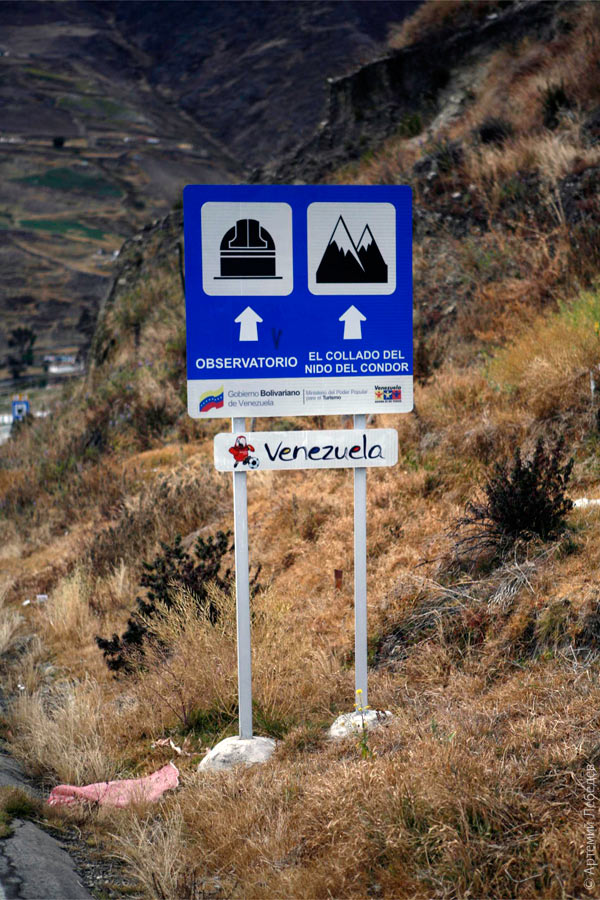 The square root of a bus. 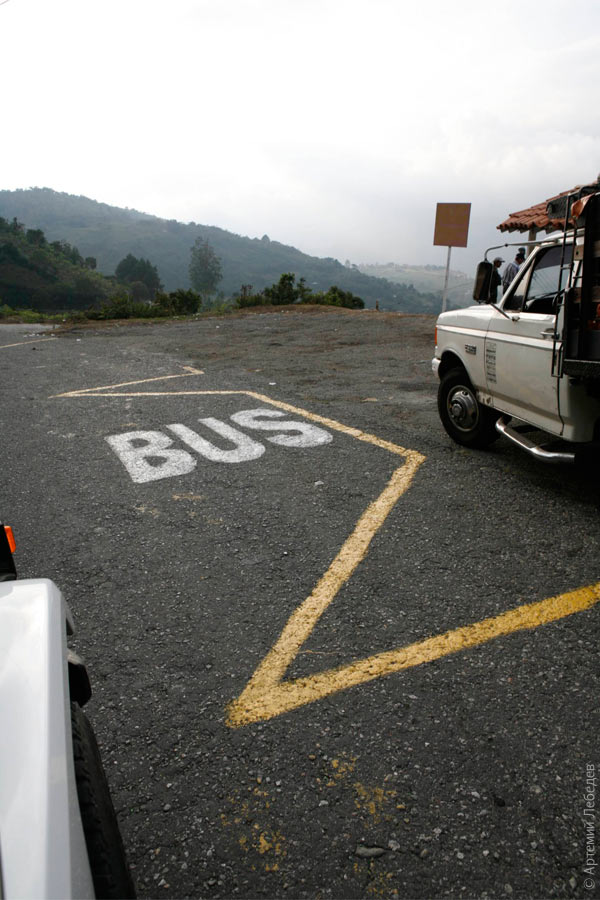 A referendum was recently held here. The two possible answers were «yes» or «no.» The first would grant incumbent president Hugo Chavez unrestricted lifelong powers. But the people voted «no.» The entire country is still painted with campaign slogans from both sides. 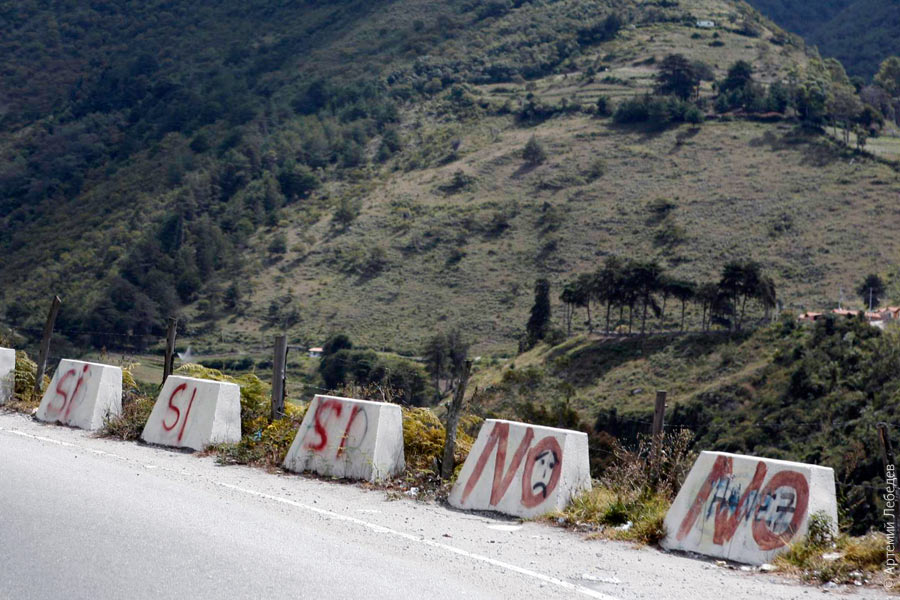 The people’s road surface markings opposed altering the constitution. 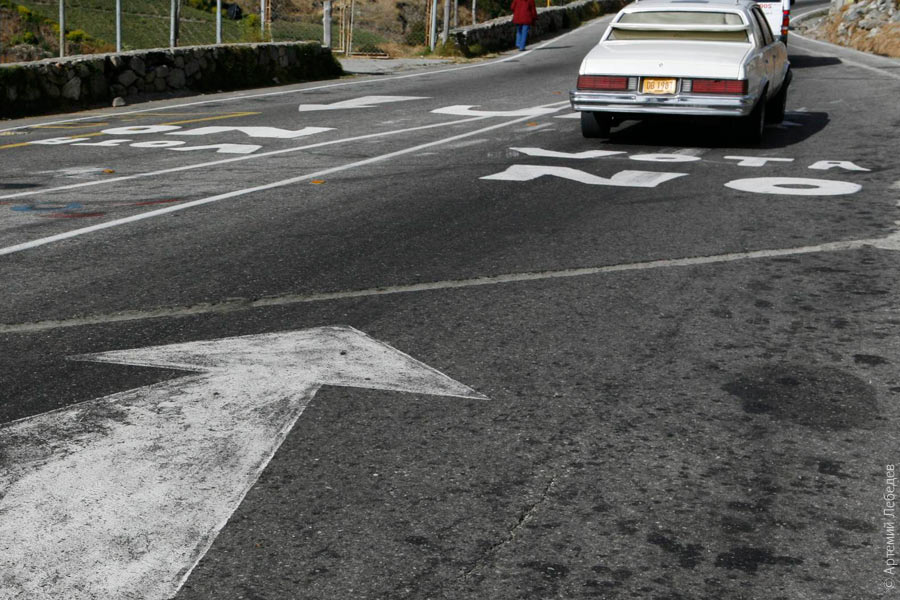 But state-run facilities preferred to toe the party line. 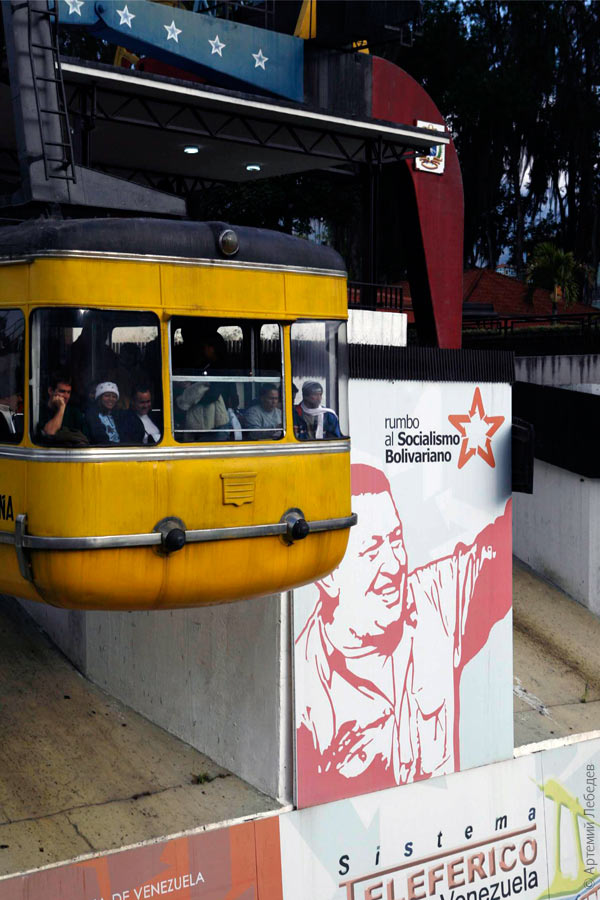 When Chavez learned of his loss, he went berserk, smashing all the TV cameras in the room and punching the walls until his hands bled. Venezuelans tell this story with unbridled glee. Not a single person is politically indifferent here—everyone dreams of Chavez getting shot and killed. 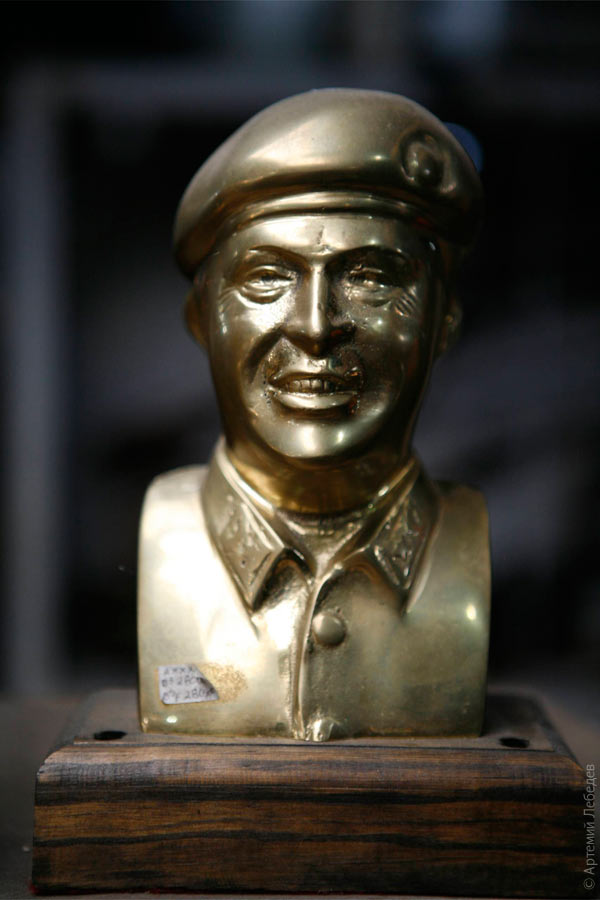 Abbreviations in Venezuela follow a system familiar to all Russians: Mintur is the Venezuelan Ministry of Tourism. The traffic lights are straightforward: there are only two models in the entire country, an older and a newer one. The poles are all the same; the mast arm design is American. 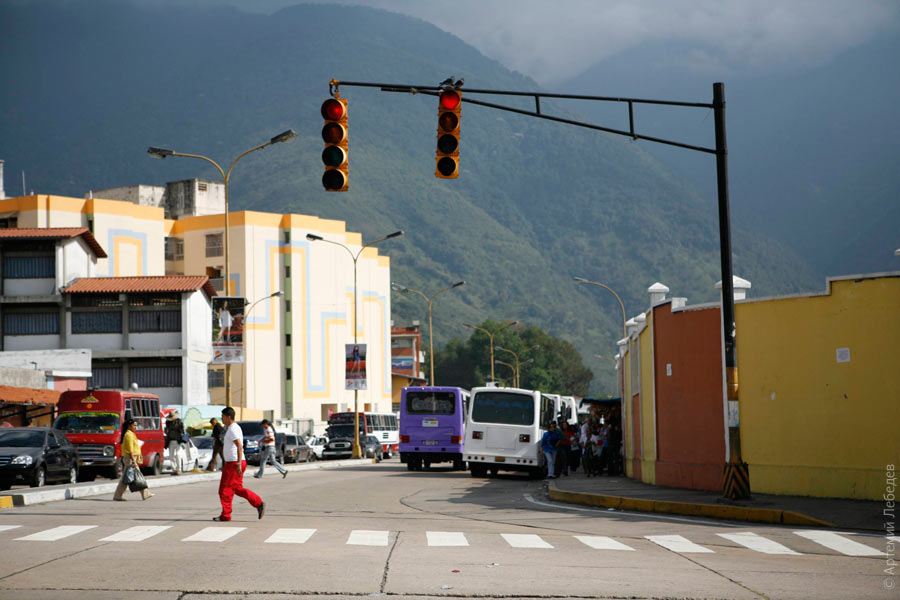 The only unique specimen is in Caracas. No other place in the world has a pedestrian light hanging over the roadway, high above everyone’s heads.  A typical bus shelter design.  Its ungainliness doesn’t bother anyone, because a bus stop here is any place a bunch of people assemble and wait. They’ll be noticed by a barker-cashier, who sticks his head out the window to announce the bus’s destination whenever he sees anyone standing on the side of the road. 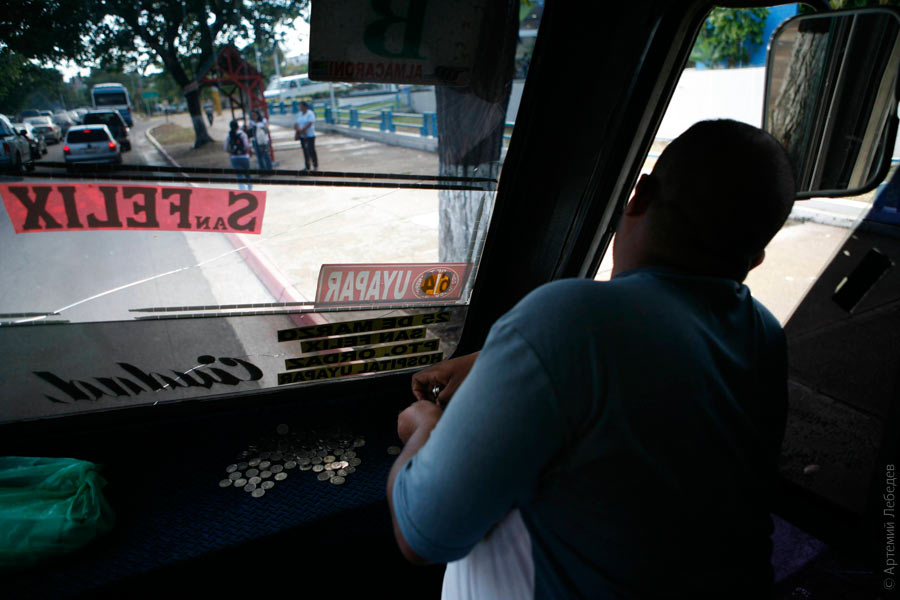 Venezuelan buses are a genre unto themselves, as independent and inimitable as in Bangladesh. Tinted film on the windshield is a mandatory attribute. Some buses look like a Muslim woman in a niqab. 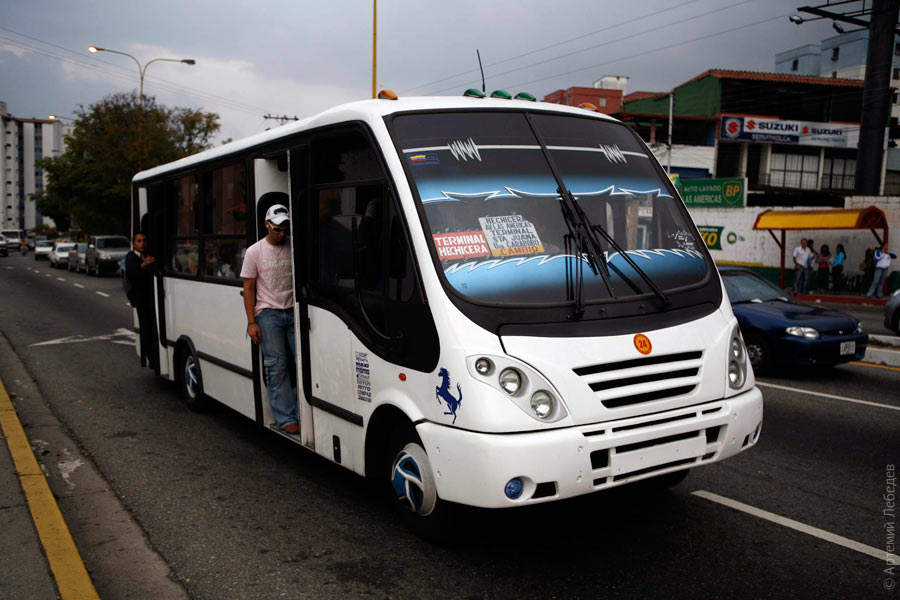 The most important thing is to have protection from the sun and lots of different decorative elements.  Gypsy cabs don’t stop for passengers in the street. And no one would get into one anyway. A taxi has to have identifying markings. 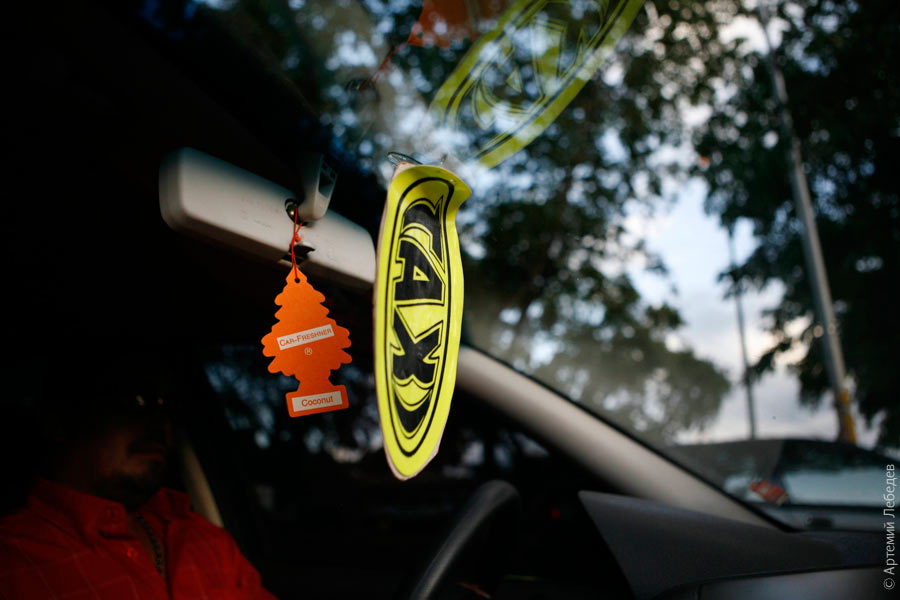 People frequently travel piled up into the back of a pickup. The cops are completely unfazed by this. 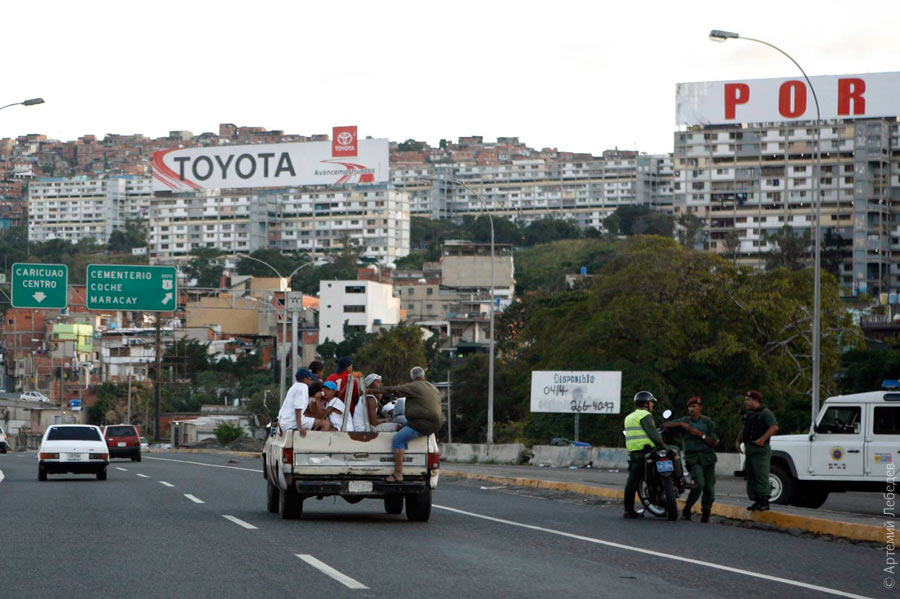 Because they don’t always fit, either. 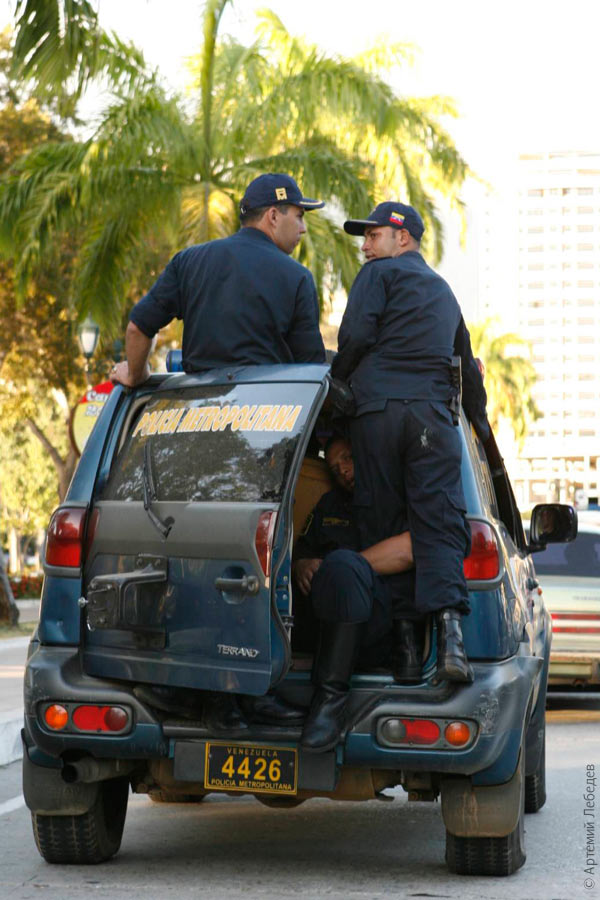 Venezuelans don’t use the postal service. At all. Post boxes, crooked and forlorn-looking, exist only at the airports. You can sometimes still find postcards in touristy areas, but I was only able to get stamps after being in the country for a week, and only at the central post office in the capital. The post is dead. 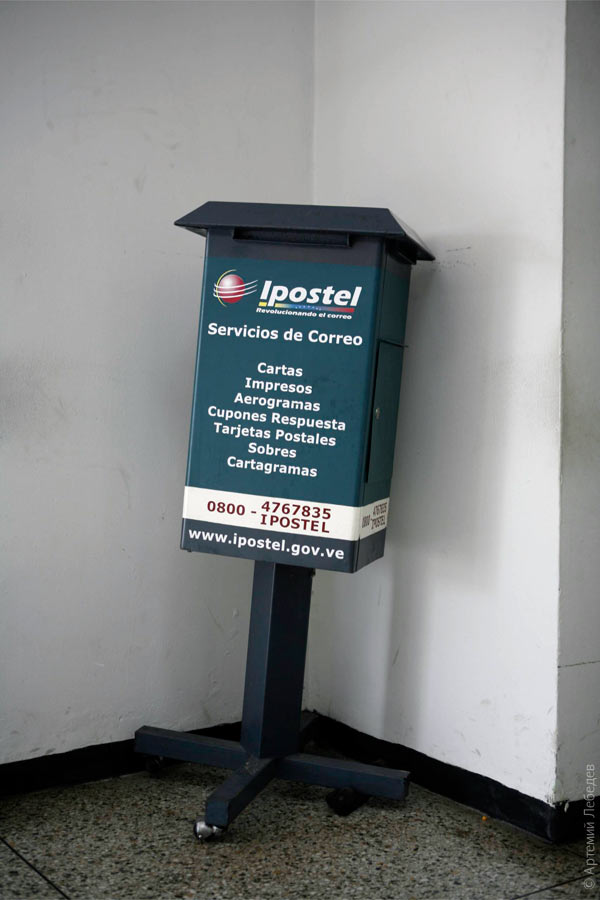 The phone, however, is not. Municipal payphones tend to be unpopular: too pricy. But there’s usually a guy sitting next to one who’ll rent you his cellphone for a few minutes. 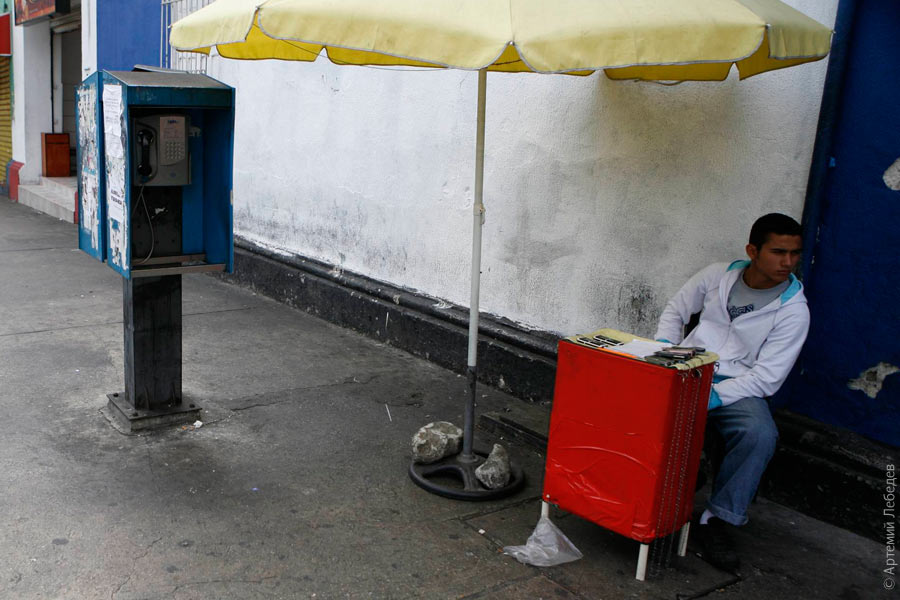 Landlines of some kind are also available in addition to the cellphones. All this really reminded me of Mongolia. 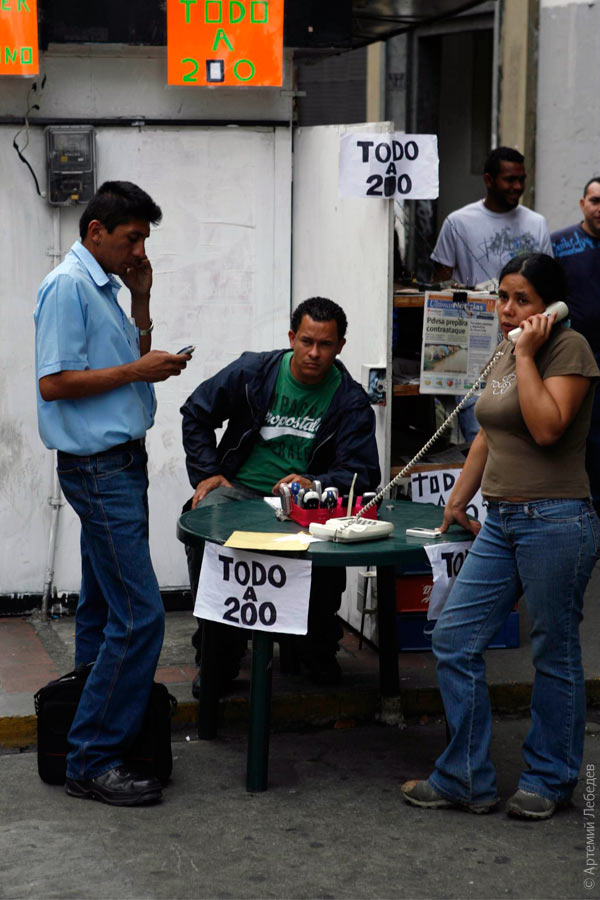 People have their own cellphones as well; most Venezuelans even own two. But it’s expensive, too expensive. No wonder half the seats at call shops (which have rows of ten booths each) are always occupied. 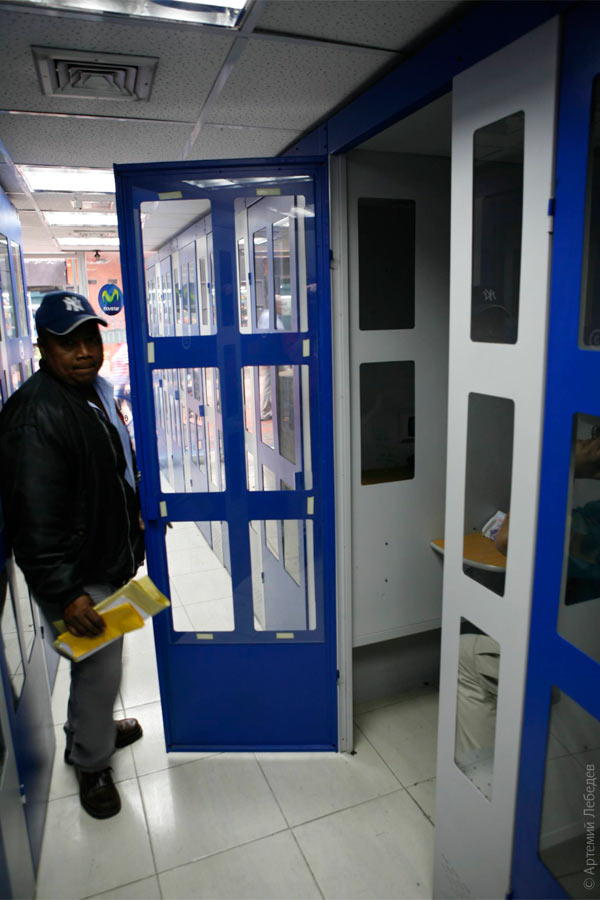 A typical local artifact: an ice cream cart. It looks like an industrial floor scrubber, only its handle always has several bike bells or other bells tied to it. The vendor rings the bells incessantly, activating the childhood ice-cream reflex of every Venezuelan within earshot. 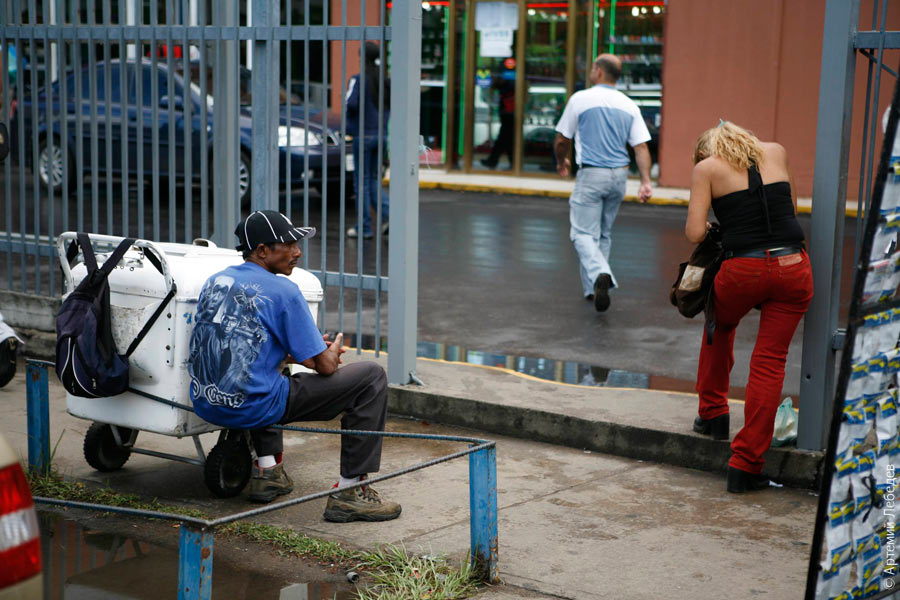 In terms of careless negligence, Venezuelans are on par with Russians. In case of fire, you might very well find yourself breaking a glass with nothing behind it. 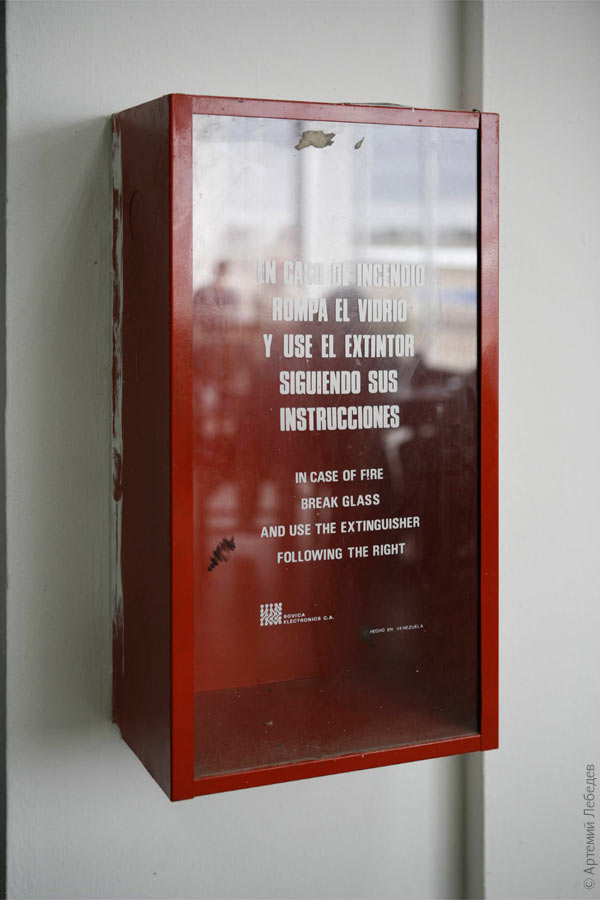 Glass with something possibly behind it is always barred. This is a typical Venezuelan window: 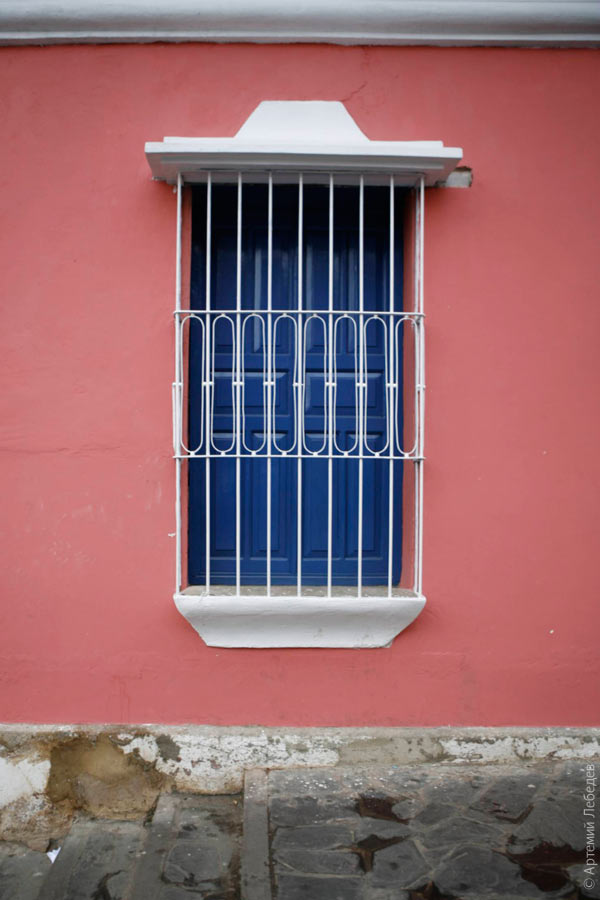 People install window bars regardless of the floor they’re on (almost like in Taiwan). 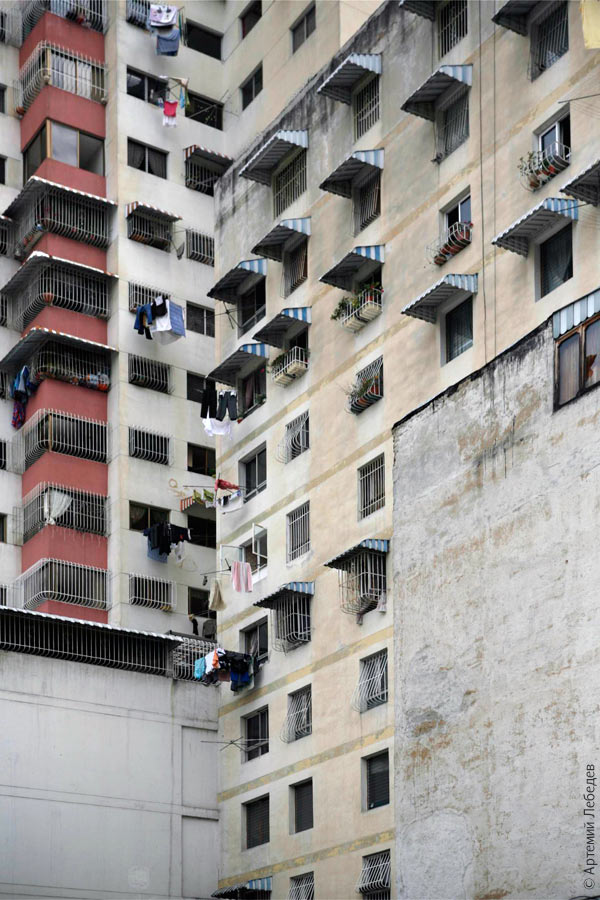 Every building has to have a name. What’s more, the name has to be written out in cut metal letters. 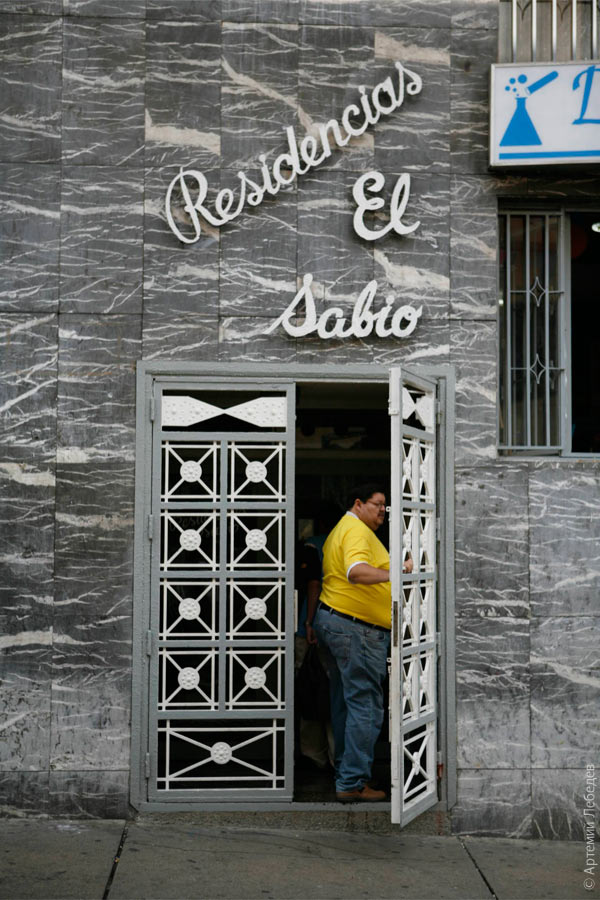 Every self-respecting private residence also has a name. It’s usually fashioned out of metal as well, although you can also find some painted tile. I’ve never encountered such a large number of individual font compositions in the streets anywhere else in the world. 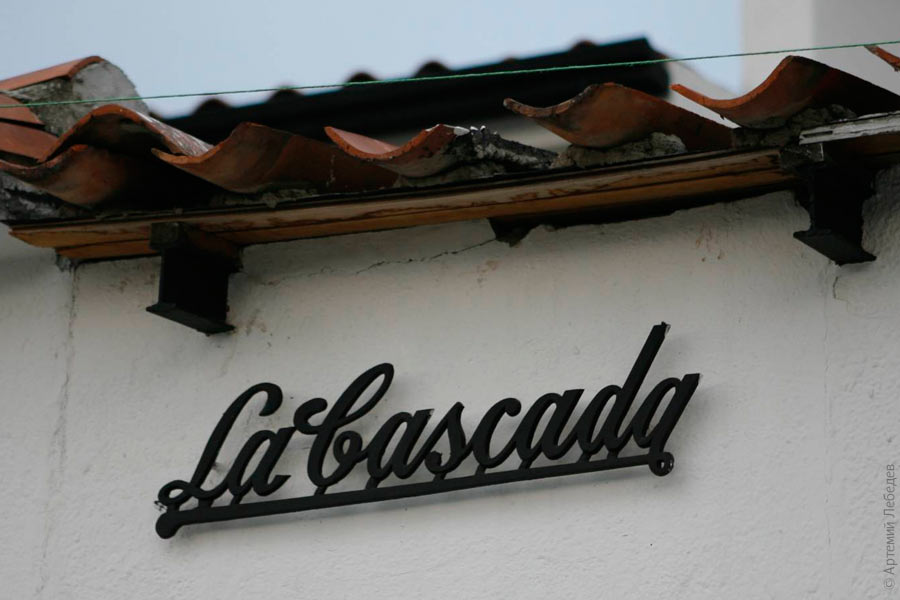 |